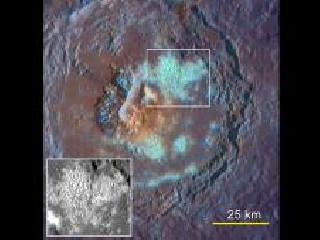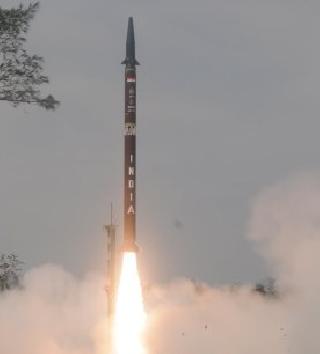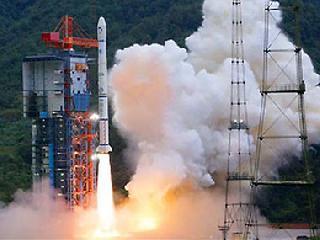
An example of a Large Crater (Tyagaraja, 97 km in diameter) with a floor partially covered by large numbers of coalesced hollows. A NASA photo.
WASHINGTON (AFP): The planet closest to the Sun had plenty of its own heat to release billions of years ago and erupted in vast river-like volcanoes that oozed around its northern pole, according to a new study.
For more than three decades, scientists have thought volcanoes may have helped craft Mercury's smooth northern plains but they have learned much more since a NASA spacecraft began orbiting Mercury for the first time this year.
A series of reports in the journal Science describe what NASA's MESSENGER probe - which stands for MErcury Surface, Space ENvironment, GEochemistry, and Ranging - has found since it began circling Mercury in mid-March.
Between 3.5 and four billion years ago, volcanic cracks opened in the crust and gushed lava, forming plains across six per cent of the tiny hot planet, covering an area as big as 60 per cent of the United States, said the study.
These were not the mountain-like volcanoes that form gradually over time, like the ones seen in Hawaii, but gash-like vents that unleashed scorching lava rivers that in some places ran two kilometres (1.2 miles) deep.
"These huge vents, measuring up to 25 kilometres (15 miles) in length, appear to be the source of tremendous volumes of very hot lava that rushed out over the surface of Mercury," said co-author James Head, professor of geological sciences at Brown University.
The lava flows pushed across the surface, "carving valleys and creating teardrop-shaped ridges in the underlying terrain," Head said.
"This one deposit is so huge, volcanism has got to be important elsewhere."
Volcanoes have had a role in the forming other planets, including Mars, and they help a planet release its inner heat.
On Earth, similar types of volcanoes known as basalt floods in the western United States formed the terrain along the Columbia River in Washington and Oregon some 12-17 million years ago, according to the US Geological Survey.
Scientists gained a few glimpses of Mercury's surface from a trio of MESSENGER flybys. The probe was launched in 2004, made a few passes near Mercury and finally entered its orbit on March 18.
The very first look at Mercury came from Mariner 10, an earlier probe that made three passes of Mercury in 1974 and 1975 mapped out about 45 percent of the surface of the planet.
NASA hopes MESSENGER will shed more light on the composition of the surface of Mercury as it continues its orbit of the planet every 12 hours at a minimum altitude of 124 miles (200 kilometres).
 Previous Article
Previous Article Next Article
Next Article











The Indian Air Force, in its flight trials evaluation report submitted before the Defence Ministry l..
view articleAn insight into the Medium Multi-Role Combat Aircraft competition...
view articleSky enthusiasts can now spot the International Space Station (ISS) commanded by Indian-American astr..
view article